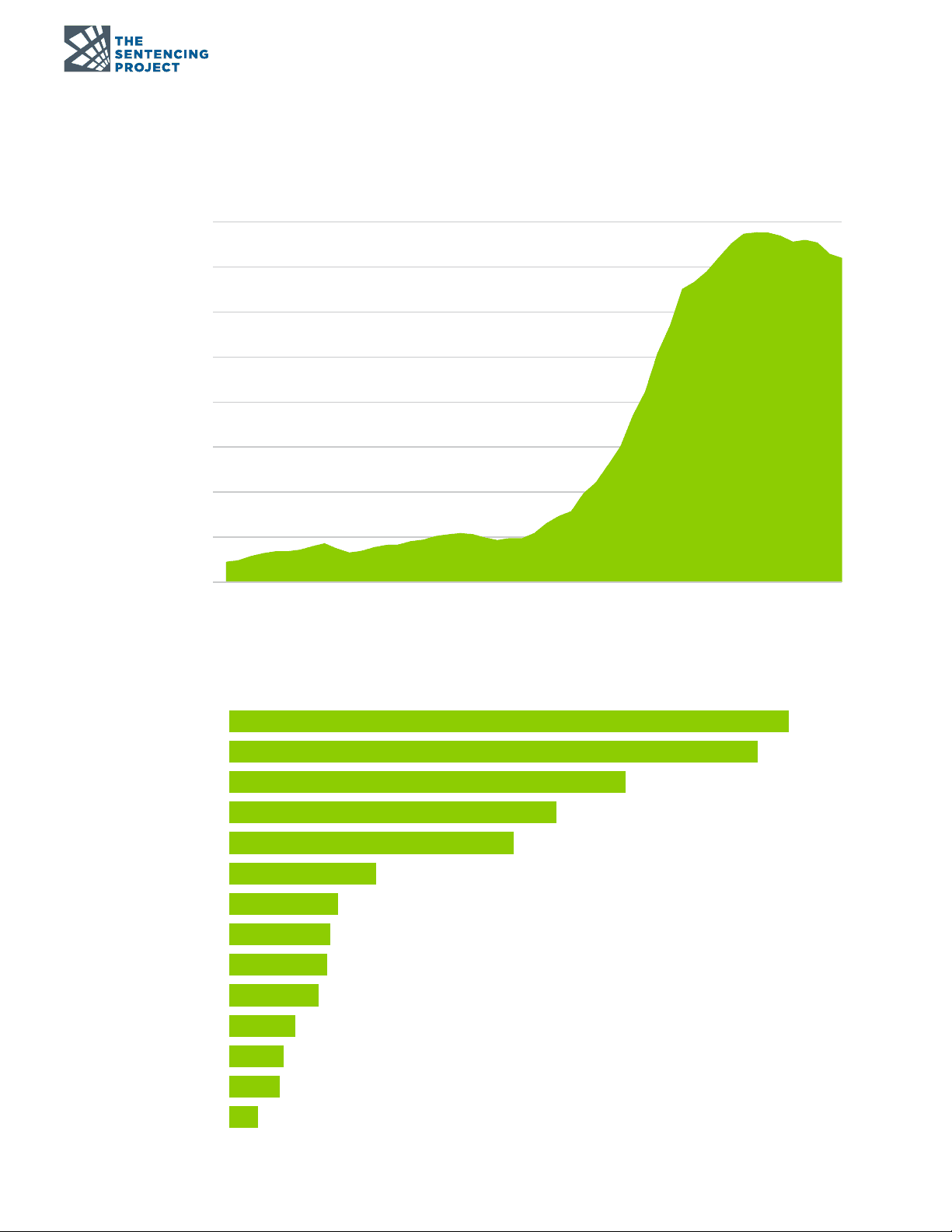
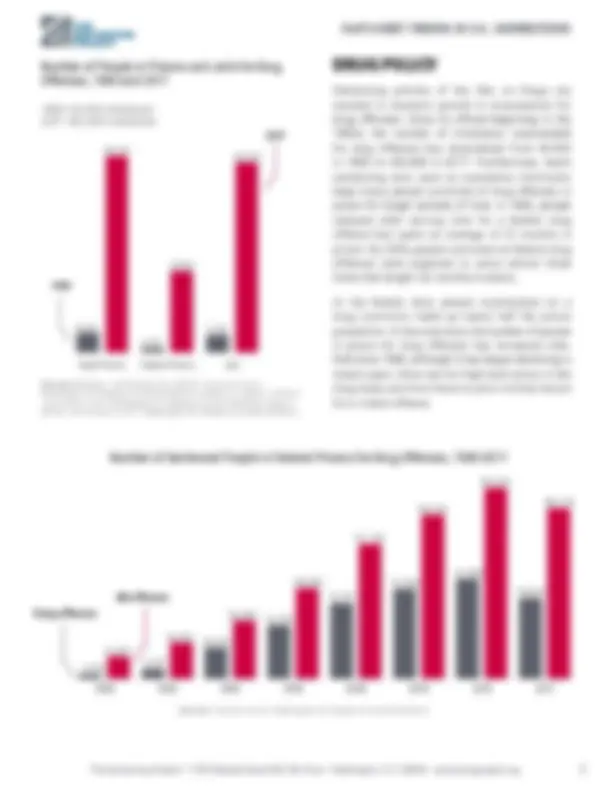
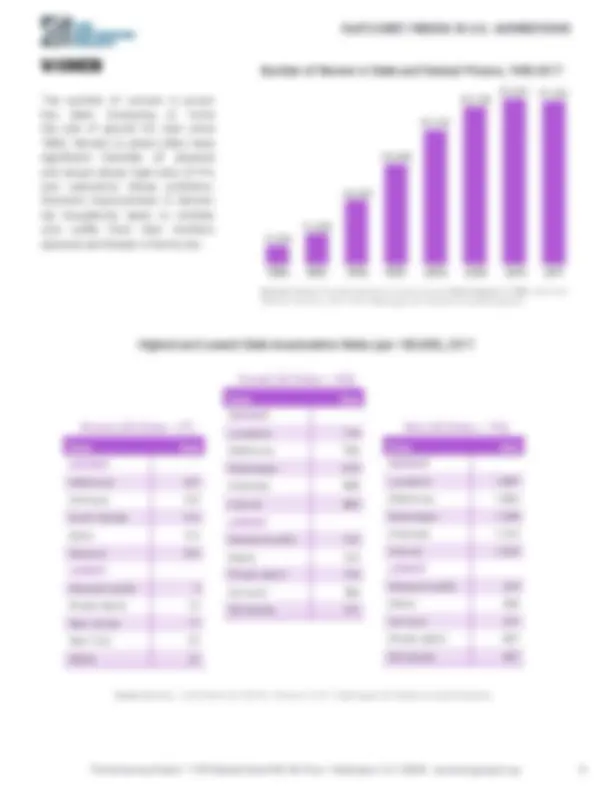
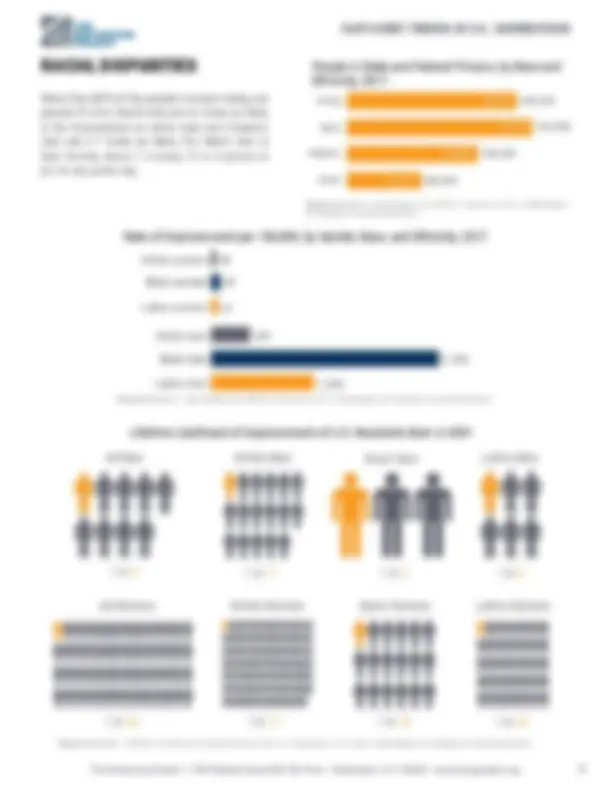
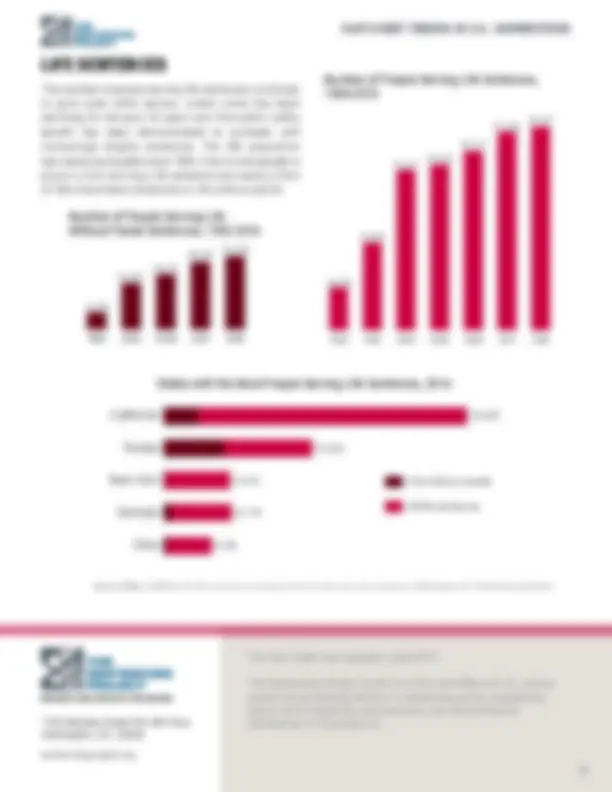


Study with the several resources on Docsity

Earn points by helping other students or get them with a premium plan


Prepare for your exams
Study with the several resources on Docsity

Earn points to download
Earn points by helping other students or get them with a premium plan
Community
Ask the community for help and clear up your study doubts
Discover the best universities in your country according to Docsity users
Free resources
Download our free guides on studying techniques, anxiety management strategies, and thesis advice from Docsity tutors
The United States is the world's leader in incarceration with 2.2 million people currently in the nation's prisons and jails — a 500% increase over the last forty years.
Typology: Study Guides, Projects, Research
1 / 8

This page cannot be seen from the preview
Don't miss anything!





Source: Bureau of Justice Statistics Prisoners Series.
Source: Walmsley, R. (2019). World Prison Brief. London: Institute for Criminal Policy Research. Available online: http://www. prisonstudies.org/world-prison-brief
2017: 1,439,
0
200,
400,
600,
800,
1,000,
1,200,
1,400,
1,600,
19251928193219361940194419481952195619601964196819721976198019841988199219962000200420082010201220142017
Number of People
India
Sweden
Denmark
Germany
France
Canada
China
Spain
Australia
Brazil
Russia
Rwanda
El Salvador
United States (^655)
Source: National Association of State Budget Officers (1985-2017). State Expenditure Report Series. Washington, DC: National Association of State Budget Officers.
Sources: Kaeble, D. and Cowhig, M. (2018). Correctional Populations in the United States, 2016. Washington, DC: Bureau of Justice Statistics. Key Statistics: Total Correctional Population. Washington, DC: Bureau of Justice Statistics. Totals adjust for individuals with multiple correctional statuses to prevent double counting.
MASS INCARCERATION
The United States is the world's leader in incarceration with 2.2 million people currently in the nation's prisons and jails — a 500% increase over the last forty years. Changes in sentencing law and policy, not changes in crime rates, explain most of this increase. These trends have resulted in prison overcrowding and fiscal burdens on states to accommodate a rapidly expanding penal system, despite increasing evidence that large-scale incarceration is not an effective means of achieving public safety.
Source: Bronson, J. and Carson E.A. (2019). Prisoners in 2017. Washington, D.C.: Bureau of Justice Statistics.
1980: 1,842,100 individuals 2016: 6,613,500 individuals
1985 1990 1995 2000 2005 2010 2017
Other
Public Order
Property
Drug
Violent
Weapons Other
7.9%
47.3%
5.9%
38.5%
0.4%
Federal (2017) State (2016)
55.2%
14.8%
17.5%
1 1.9%
0.6%
Immigration
6.7% 17.0% (^) 14.0%
Prison Jail Parole Probation
319,
1,505,
182,
740,
220,
874,
1,118,
3,673,
Source: Bronson, J. and Carson, E.A. (2019). Prisoners in 2017. Washington, DC: Bureau of Justice Statistics.
WOMEN
The number of women in prison has been increasing at twice the rate of growth for men since
Sources: Bureau of Justice Statistics Prisoners Series; Minor-Harper, S. (1986). State and Federal Prisoners, 1925-1985. Washington, DC: Bureau of Justice Statistics.
State Rate HIGHEST Louisiana 719 Oklahoma 704 Mississippi 619 Arkansas 598 Arizona 569 LOWEST Massachusetts 120 Maine 134 Rhode Island 170 Vermont 180 Minnesota 191
State Rate HIGHEST Oklahoma 157 Kentucky 133 South Dakota 124 Idaho 114 Missouri 109 LOWEST Massachusetts 9 Rhode Island 13 New Jersey 17 New York 22 Maine 22
State Rate HIGHEST Louisiana 1, Oklahoma 1, Mississippi 1, Arkansas 1, Arizona 1, LOWEST Massachusetts 239 Maine 250 Vermont 331 Rhode Island 337 Minnesota 357
11 1,
13,
21,
44,
68,
93,
107,
1 12,
Source: Bonczar, T. (2003). Prevalence of Imprisonment in the U.S. Population, 1974-2001. Washington, DC: Bureau of Justice Statistics.
Source: Bronson J. and Carson, E.A. (2019). Prisoners in 2017. Washington, DC: Bureau of Justice Statistics.
Source: Bronson J. and Carson, E.A. (2019). Prisoners in 2017. Washington, DC: Bureau of Justice Statistics.
RACIAL DISPARITIES
More than 60% of the people in prison today are people of color. Black men are six times as likely to be incarcerated as white men and Hispanic men are 2.7 times as likely. For black men in their thirties, about 1 in every 12 is in prison or jail on any given day. Other
Hispanic
Black
White 436,
475,
336,
190,
30.3%
33.1%
23.4%
13.3%
Black men
Black women
White women
Latina women
White men
Latino men
In 48 states, a felony conviction can result in the loss of an individual’s voting rights. The period of disenfranchisement varies by state, with some states restoring the vote upon completion of a prison term, and others effectively disenfranchising for life. As a result of the dramatic expansion of the criminal justice system in the last 40 years, felony disenfranchisement has affected the political voice of many communities. As of 2016, 6.1 million Americans were unable to vote due to state felony disenfranchisement policies.
FELONY
DISENFRANCHISEMENT
No restriction (^) Prison Prison & parole Prison, parole & probation
Prison, parole, probation & post-sentence
Source: Chung, J. (2016). Felony Disenfranchisement: A Primer. Washington, DC: The Sentencing Project.
Source: Uggen, C., Larson, R., & Shannon, S. (2016). 6 Million Lost Voters: State-Level Estimates of Felon Disenfranchisement, 2016. Washington, DC: The Sentencing Project.
Source: Uggen, C., Larson, R., & Shannon, S. (2016). 6 Million Lost Voters: State-Level Estimates of Felon Disenfranchisement, 2016. Washington, DC: The Sentencing Project.
The Sentencing Project • 1705 DeSales Street NW, 8th Floor • Washington, D.C. 20036 • sentencingproject.org 8 8
This fact sheet was updated June 2019.
The Sentencing Project works for a fair and effective U.S. justice system by promoting reforms in sentencing policy, addressing unjust racial disparities and practices, and advocating for 1705 DeSales Street NW, 8th Floor alternatives to incarceration. Washington, D.C. 20036
sentencingproject.org
The number of people serving life sentences continues to grow even while serious, violent crime has been declining for the past 20 years and little public safety benefit has been demonstrated to correlate with increasingly lengthy sentences. The lifer population has nearly quintupled since 1984. One in nine people in prison is now serving a life sentence and nearly a third of lifers have been sentenced to life without parole.
LIFE SENTENCES
1992 2003 2008 2012 2016
12,
33,
40,
49,081 53,
1984 1992 2003 2005 2008 2012 2016
34,
69,
127,677 132,
142,
157,966 161,
13,
9,
8,
6,
Life without parole
All life sentences
Source: Nellis, A. (2016). Still Life: America’s Increasing Use of Life and Long-Term Sentences. Washington, DC: The Sentencing Project.